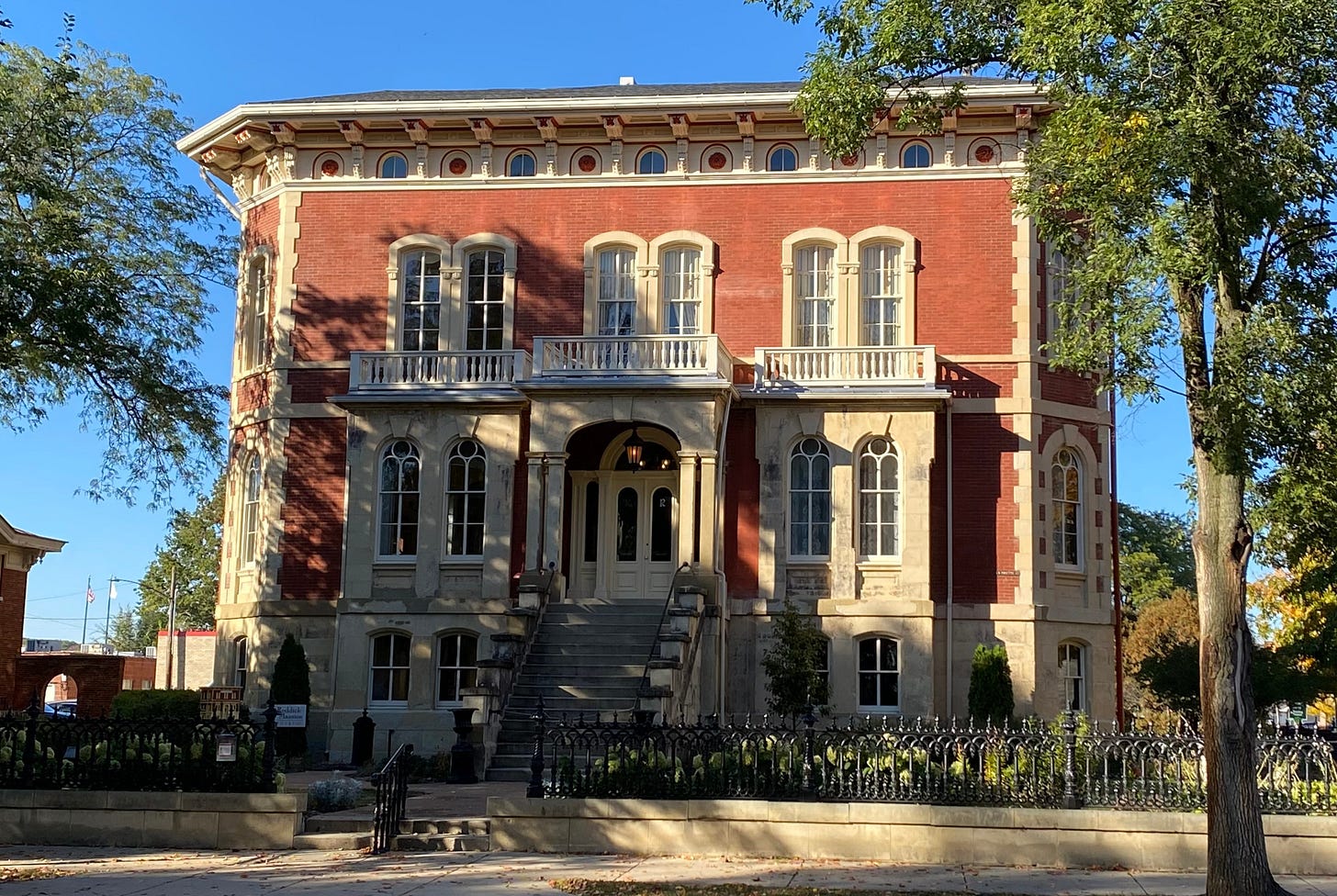Hello, everyone, and welcome to another edition of Canal Stories, a series brought to you by the Canal Corridor Association to celebrate the 175th anniversary of the Illinois & Michigan Canal and the communities that were shaped by its legacy. If you’ve spent any time wandering through the historic downtown of Ottawa, Illinois, you have no doubt stumbled upon the Reddick Mansion, the gorgeous, Italianate home that has looked out onto Washington Square since its completion in 1858. But just who were the notable people who called this red-brick beauty home? Today, we’re getting to know the members of the Reddick Family. This story comes to us from our good friends at The Reddick Mansion Association.
Glassmaker, farmer, statesman, businessman, and philanthropist – all of these terms describe William Reddick, one of early Ottawa’s most prominent citizens. From his humble beginnings as a common tradesman to the respected position he holds in the history of Ottawa, his is truly a classic tale of the American dream.
William Reddick was born in County Down, Ireland, in 1812, to James and Bessie Reddick. In 1816, his father brought the family to America, where they settled in the east.
With little formal education, a teenaged William went to work in the glass-making trade in Brownsville, Pennsylvania, where he eventually met and married Eliza Jane Collins, who would be his life partner for over 50 years. Unlike her husband, Eliza came from a family that had been long-settled in the United States. The two were married after William completed his indentureship at the factory, sometime after February 1st of 1831. The exact date of their wedding is unknown.

After working in various glass-making facilities in the east and saving $1,000, William took Eliza to Illinois in 1835, where they had purchased 400 acres of prime farmland at $1.25 an acre in LaSalle County. By 1838, William had taken on a new challenge as the sheriff of the county, a position he held until 1846. His terms as sheriff coincided with the building of the Illinois and Michigan Canal.
This was not to be the end of Reddick’s foray into politics. He was elected to the Illinois State Senate in 1846, and again in 1870. As a staunch Democrat, he remained very active in the Democratic Party organization in northern Illinois all of his life.
It was during this time that William and Eliza opened their home to a young girl named Elizabeth Burrier Funk, who became their adopted daughter. While circumstances are unclear as to how and when the arrangements were made, Elizabeth came to live with the Reddicks sometime between 1844 and 1850, as her name first appears with theirs on the 1850 census.
In 1855, perhaps with an eye to the governorship of Illinois, William commissioned Olmsted and Nicholson, two Chicago architects, to build a home across the street from Washington Square. Construction was completed in 1858, just in time for people to witness the first Lincoln-Douglas Debate from its front stairway and balconies. Reddick sat on the speakers’ platform with Stephen Douglas during the debate.
William Reddick was also a well-known figure in the business community, being involved in several enterprises. He also continued to expand his land holdings, in LaSalle County and in other states. It was through these activities that he amassed a considerable fortune, reported to have been $300,000 in 1877.
After Eliza’s death in 1883, William urged Elizabeth to officially change her name to Elizabeth Burrier Funk Reddick. Two years later, he would also pass away on March 8th, 1885. As word of his death spread rapidly throughout Ottawa, flags were lowered to half-mast. Dignitaries from around the state marched in his funeral procession.
Upon William’s death, Elizabeth inherited a sizable portion of his estate, leading his relatives to contest his will and initiate a court trial in early December of 1886. Unfortunately, Elizabeth died on February 22nd, 1887 of “catarrhal consumption and a chronic affection of the throat” before the case was settled. Because Elizabeth had never married and had died without a will, her brother John stood to inherit Elizabeth’s estate. He eventually settled the case with the Reddick relatives.
Though William Reddick’s line was cut short, he is forever immortalized in the history of Ottawa, not just for his political achievements, business ventures, and stunning house, but for his consideration for the community. As a firm believer in the importance of a good education, William willed his home to the public to be used as a “free reading room.” From 1888 to 1975, the Reddick Mansion was known as the Reddick Library, which housed Ottawa’s literary collection, and for some time, a natural history museum. Today, this generosity continues to be honored in the town, as the current library still bears his name.
That concludes today’s Canal Story. Thank you so much for joining us as we continue our journey through the history of the Illinois & Michigan Canal. If you’ve enjoyed this episode, pass it along to your family and friends, be sure to leave us a like or drop us a comment, and we’ll see you again very soon.





Can the house be toured now?